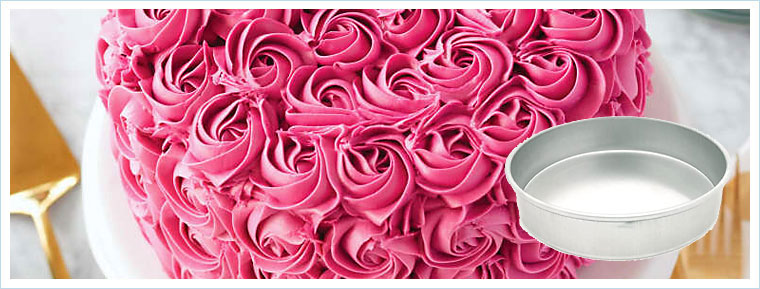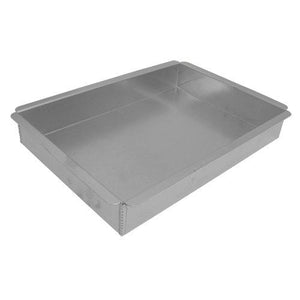
Though we found they baked cakes paler than other pans, this can be remedied by an extra few minutes in the oven.

We saw Magic Line pans recommended many times in forums like Cake Central, and the 9-inch pan is well-reviewed on Amazon with 4.8 stars out of more than 250 reviews. For that kind of variety, I’d recommend Parrish Magic Line, which makes pans in every size (the diameter increases by 1-inch increments) between 3 inches and 16 inches, at prices low enough that you can afford to expand your options. Or maybe you dream of making enormous cakes, or tiny, 4-inch cakes for two. If you’re an ambitious baker, you may want to tackle tiered cakes, and you’ll need a wider variety of sizes than just 8, 9, and 10 inches (the 1-inch difference won’t make for very pronounced tiers). They’ll completely bake the outside of your cake well before the middle is done, so that by the time the middle is done, the crust will be dark and dry, if not burned. Thin, flimsy metal pans or pans with a dark-colored nonstick coating (pan coatings come in many shades of gray “dark” means anything closer to black than silver) should also be avoided because both conduct heat too quickly. Ceramic and glass conduct heat less efficiently, baking your cake more slowly, and potentially throwing off baking times. Metal is more durable than ceramic or glass, and it’s what most recipes are designed for. The large majority of cake pans are made of metal-either aluminum or coated steel-and we think it’s best to stick to those that are.

A good cake pan, no matter what the shape, should be sturdy and resistant to denting or warping, otherwise you risk ending up with a misshapen bundt or a leaning layer cake. But there are a few things to look for in any pan.

Certain qualities are unique to a particular type of pan, and we saved those for the individual sections on each below.


 0 kommentar(er)
0 kommentar(er)
